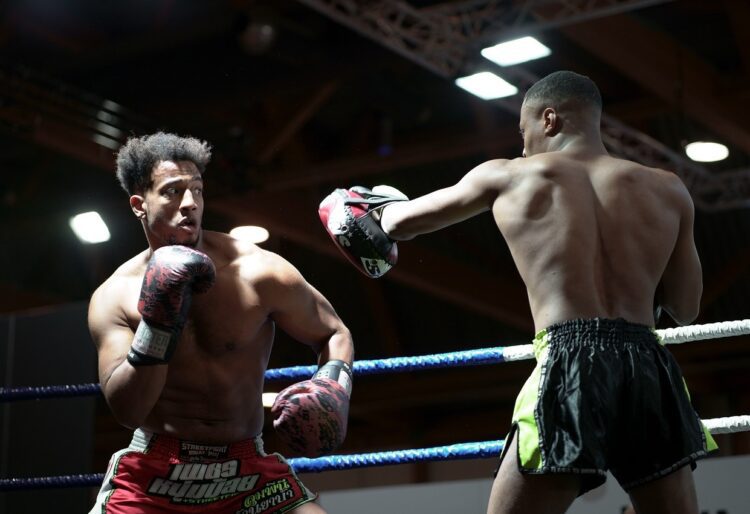By Owais Tabassum
Ah, boxing!
The sweet science. The fight game. The noble art. The greatest sport of all time? Let’s explore that notion.
The sport of boxing has given birth to innumerable tales, enthralling myths, deep rooted traditions, cinematic reproductions and captivating literature filled with stories of redemption, tragedy, bravery, fortitude and sometimes outright madness!
This ancient Greek sport was birthed around 600BC in which competitors would clobber one another with hands wrapped in strips of leather. By the time the Romans got wind of this, they introduced gloves with thick metal studs and skin piercing spikes (of course they did). Boxing became a gladiatorial event giving birth to the ‘pugilist’ and a culture of celebrity fanfare which was rampant even two thousand years ago.
The fall of the Roman empire, saw the decline of boxing from the grand coliseum and into medieval barnyards and back alleys. Boxing all but disappeared during the Middle Ages.
A revival of the sport was brewing in London England, during the 18th century. Pugilists would compete with bare knuckles, fighting for money and fame, giving birth to the “prize fighter” era. Boxing gained the support of the upper classes and in some cases royalty. This patronage helped elevate the sports status and legitimacy.
But boxing was still mercilessly brutal.
Consider this,
The longest Boxing match in history was fought between Andy Bowen and Jack Burke in a hot and humid field in New Orleans 1893. The fight lasted an excruciating 110 rounds for a total of 7 hours and 19 minutes. It was declared a “no contest” because neither boxer was able to continue after the 111th round.
Figure 1 An artist’s depiction of the longest boxing bout in history (110 rounds) between Andy Bowen and Jack Burke. 1893 New Orleans, Louisiana
Thankfully then, the 19th century saw the adaption of the ‘Queensbury rules’ introduced by the Marquess of Queensbury at the time (who through a lawsuit sent poet Oscar Wilde to his stint in the READING Gaol prison)
The Queensbury rules introduced padded leather gloves, rounds were divided into three-minute segments and gone were the days of attacking downed opponents and sadistically placed spiked gloves. The sweet science was born, strategic tactics encouraged calculated defense, clever footwork and the idea of out witting and outsmarting opponents brought new dynamics to a previously one-dimensional brutish aƯair.
Weight classes were established, regulations and governing bodies slowly replaced mob-controlled bouts of corruption, and the British boxing board of control ensured the safety and well-being of the fighters.
Boxing events have historically had a sort of magic that attracts ringside spectators such as movie stars, singer’s, world Leaders and socialites.
When Irish sensation Barry McGuigan fought during the troubles in his home country it united both the Protestants and Catholics under the same roof and on terrestrial tv. Barry’s message was clear “leave the fighting to Mcguigan”.
Manny Pacquiao out of the Philippines would fight and the bustling streets of Manilla would come to a stand still and law enforcement reported huge drops in crime.
Muhammad Ali voted sports personality of the century and perhaps owning the most recognizable name and face in the modern world fought all over the globe inspiring humanity everywhere he went.
Figure 2 Figure 3 Muhammad Ali on the cover of sports illustrated
The decline
The ‘heavyweight’ division is historically considered the most exciting weight class. Picture two 17 stone colossal giants delivering edge of your seat, “blink and you’ll miss it” show stopping knock outs. The arenas filled with “Oohs and Aahs” with every swing landed or missed.
The early 2000’s saw the retirement of perhaps the most formidable of these heavyweights, the self-proclaimed “vicious and brutal baddest man on the planet” ‘Iron’ Mike Tyson. Lennox Lewis, another boxing hall of famer with extraordinary skill and talent had also just finished up his illustrious career.
The void was filled by Ukrainian siblings Wladimir and Vitali Klitschko (the latter being the current mayor of Kyiv, Ukraine)
The Klitschko brothers dominated the heavyweight scene holding the various titles over the space of a lengthy decade. I am not undermining the talent of this fearsome duo, but the sheer lack of competition and a series of mismatches resulted in a decade of unremarkable and frankly boring period until they were dethroned in part by the ‘Gypsy King’ Tyson Fury.
There was no shortage of talent in other weight classes, but boxing also diminished in popularity due largely to expensive PPV bouts at ungodly hours (for those not living in the U.S)
Greedy and conniving egoistical promoters were preventing the best competing against the best topped with a number of sanctioning bodies and their so called ‘alphabet titles’ causing confusion of who the world champions actually were.
Just to give you an idea we have the WBC belt WBA, IBF, IBO, WBO, WBU as well as the British, commonwealth and area titles to name a few.
The 2000s also saw “UFC” or ‘mixed martial arts’ enjoy an astronomical rise in popularity winning a huge portion of ‘fight fans’ and it was easy to see why. The events were spectacular, and the best fought the best uncorrupted by the ‘politics’ as its run by a single governing body and a single championship belt per weight division.
The future
Today however, boxing is undergoing a fresh resurgence under an unlikely alliance with the Saudi sports minister Turki Alalshikh. Turki has ambitions in delivering high quality events where no expense is seemingly spared with promotional videos directed by the likes of ‘Guy Richie’. Fighters are deservedly well paid; captivating fight cards are being put together and numerous ‘unification’ bouts are taking place. All major boxing promoters are seemingly forming an ‘avenger’s’ style assembly of boxers making for mouth watering current and future contests. It is not without its critics of course and time will tell if this is ultimately great for the sport.
Figure 4 Turki Alalshikh pictured center with the boxing’s elite promoters and elite fighters
Modern championship bouts are 12 rounds in length, drug testing is stringent, and safety of the competitors is paramount. Grassroots also remain sturdy, boxing gyms up and down the country provide ample support to misguided youth and inspire hope to would be athletes. Women’s boxing is also flourishing. I implore you to
drown any prejudices you may have and watch a Katie Taylor event and be amazed at the skill and technical prowess on display.
A sense of pride in this historic sport lives on through the next generation of competitors and champions. Boxing may truly become great again; the future holds immense promise and I for one will continue to be a keen observer.













































